POSTCARDS OF OLD LONDON
SENT BY
DAVE HILL
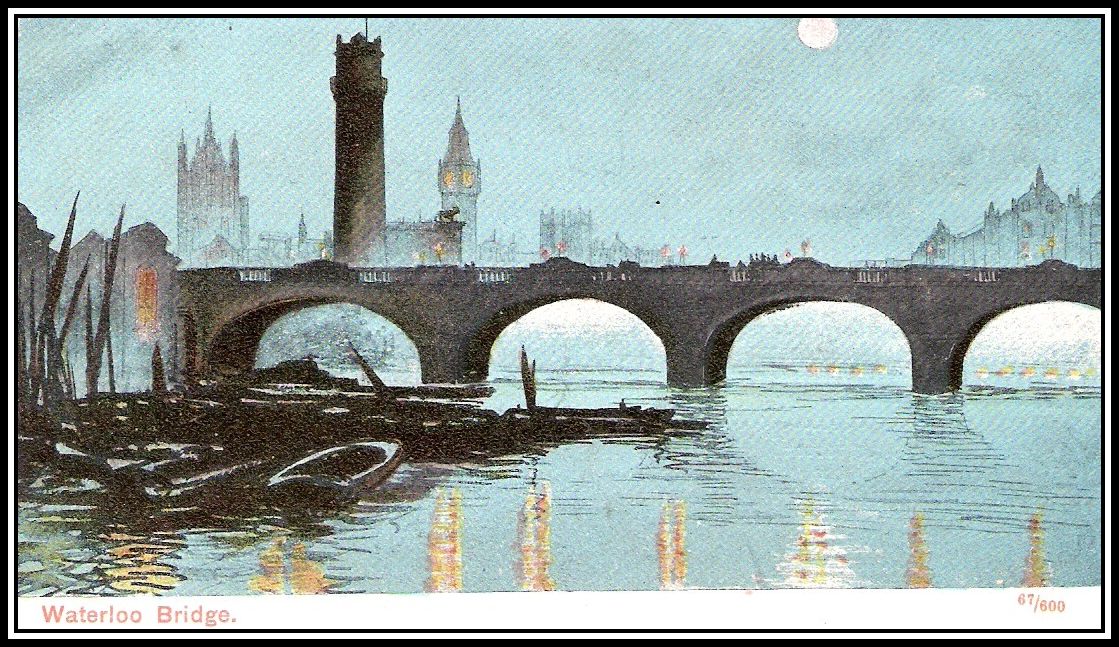 Postcard showing the Old Waterloo Bridge.
Postcard showing the Old Waterloo Bridge.
-oOo-
A SET OF POSTCARDS FOR YOUR DELIGHT
HOME PAGE
Today we have the ability to indulge in Instant Communication. We are able to pick up a telephone and make a call to almost anywhere in the world and be connected with someone within seconds. We are able to send a text message or email (i.e. Electronic Mail) and expect it to be delivered immediately. We also have a variety of Social Media (i.e. Computer-Mediated Technologies) sites via the Internet where we are able to post messages, photographs and music to a multitude of people at one time and almost instantly receive their comments.
Our obsession with Instant Communication has practically brought to an end the age of letter writing. I hear that in the United States, some school systems are no longer teaching young children Cursive Writing!
Prior to the advent of our modern methods of communication, there existed a time when we relied totally on our daily post, which could be delivered two or three times a day, to bring us news of family and friends. This was an age when people wrote letters or sent postcards to let the recipient know how things were with the sender.
Now it is a rare day when a mail carrier/post person pushes a hand-written letter through our letterboxes. Today most postcards that we receive are from the dentist or doctor’s office to remind us of an up-and-coming appointment, and most of our once-a-day postal delivery consists of bills and what has come to be called, Junk Mail, which includes impersonal Form Letters, advertising material, political campaigning and an array of other matter that promptly goes into the Recycle Bin after no more than a cursory glance. Sadly, today it is a rare occurrence when we receive a postcard from some distant land sent by a loved one or friend wishing us to share in the joys of their travels. But when one such postcard arrives, it is a joy to behold!
-oOo-
The world’s oldest postcard was sent in 1840 to the writer Theodore Hook (1788-1841) by himself from Fulham, London and bore a Penny Black stamp. This postcard was a hand-painted design on card, which was probably made by the sender and was believed to be sent as a joke on the Postal Service!
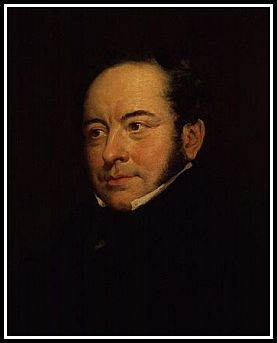 A Portrait of Theodore Hook painted by Eden Upton Eddis (1812-1901)
A Portrait of Theodore Hook painted by Eden Upton Eddis (1812-1901)
Postcards were introduced to the British public in 1870. These postcards were without images and issued by the Post Office and were of two sizes and printed with a stamp as part of the design and included in the sale price. The first known picture postcard where the image functioned as a souvenir was sent from Vienna in 1871 and the first advertising card appeared in 1872 in the U.K.
-oOo-
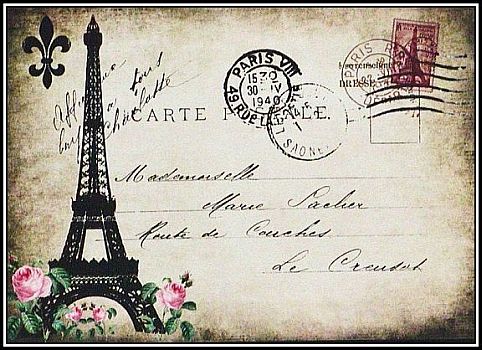
Since this time postcards have become an essential part of the traveling experience. People quickly embraced the idea of purchasing a postcard whenever a journey was made to an interesting place or when something of interest was discovered. Prior to the time when the price of a camera was within reach of the average person, the postcard represented a way to help retain the memory of a visit. Postcards were sent to family and friends and carried messages on their reverse side. They were also sent to special loved ones during a separation to remind the recipient that they were not forgotten. Postcards were a way that allowed the receiver’s view of the world to be expanded. Some people collected postcards and placed them in albums or else framed them and hung them on walls of both home and workplace.
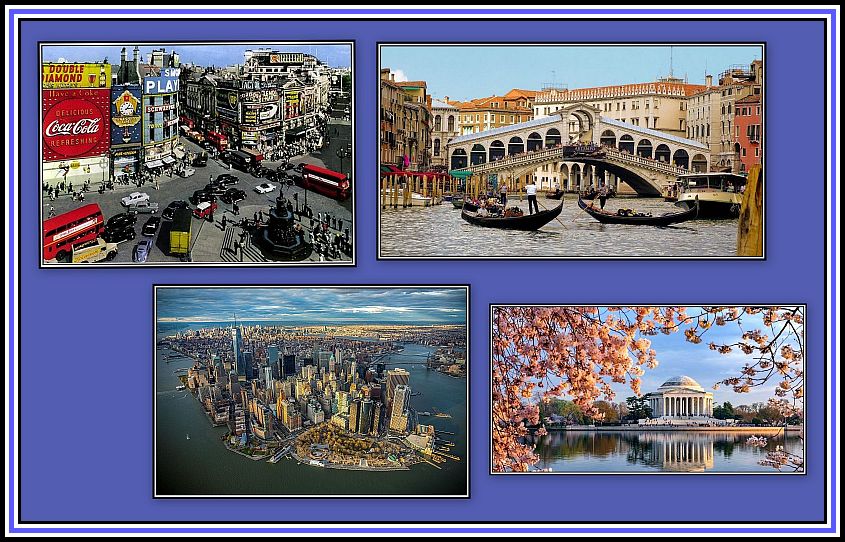 Postcards of London, New York, Venice & Washington D.C.
Postcards of London, New York, Venice & Washington D.C.
Postcards quickly became available in all great cities and allowed images of their sites of importance to be had for a few pennies. Images were depicted in glorious black and white while others were available as sepia-tinted versions and even as water-colour representations.
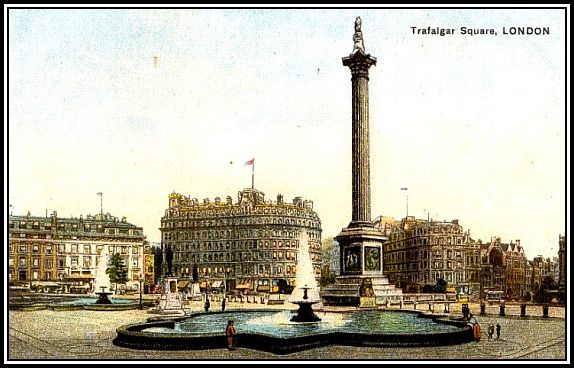 Postcard of a Water-Colour Presentation of Trafalgar Square from 1905-1910
Postcard of a Water-Colour Presentation of Trafalgar Square from 1905-1910
-oOo-
Over the years I have collected postcards from many cities in many countries and of some spectacular wonders of nature. Today, now that cameras are simple to use, the postcard has become of less importance in helping the traveler maintain a record of their visit. However, I still buy some postcards during my travels since they generally show off a site to its best advantage and use my own meager photographic efforts to supplement the more professional look of the postcard.
-oOo-
I remember buying my first postcard when I was about five years old. I had been taken to the National Gallery in Trafalgar Square by my parents. I remember seeing a portrait painted in 1805 by Francisco José de Goya y Lucientes (1746-1828; i.e. Goya) of Doña Isabel de Porcel and, believe it or not, falling in love with the lady.
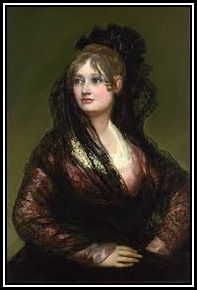 Portrait of Doña Isabel de Porcel
Portrait of Doña Isabel de Porcel
Charles S.P. Jenkins
-oOo-
It has become commonplace for postcards of city sites to be produced over the years and so record the changes that have taken place around it. The collection of postcards centered on Trafalgar Square in London that appears in this series clearly demonstrates this.
-oOo-
The following series of short tales have come about after receiving a number of postcards sent to me by Mr. Dave Hill. For these, I am extremely grateful.
It is a joy to look at such illustrations and see how London once looked. It is perhaps hard to appreciate that many of the sites and scenes that make up the London of today has not always looked as it now does. Places change with time; buildings become used for other purposes or are replaced.
Who would have thought that the wonderful Kingsway Tunnel that once served as an important link for commuters, today serves mostly as a storage area. Who knew that Eros had not always stood at the centre of Piccadilly Circus or that one or two statues of Trafalgar Square have changed? And who knew that Waterloo Bridge is also known as The Ladies’ Bridge! And what of the name of Charlie Brown? I only knew the name through the work of Charles M. Schultz and The Coasters!
Places and things come and places and things may go, but memories live on in our minds and in print.
——oooOOOooo——
Click here to GO to the THE KINGSWAY TUNNEL
——oooOOOooo——
Click here to GO to the OLD WATERLOO BRIDGE
——oooOOOooo——
Click here to GO to the TRAFALGAR SQUARE
——oooOOOooo——
——oooOOOooo——
Click here to GO to the CHARLIE BROWN’S
——oooOOOooo——
Click here to GO to the AN ADDITIONAL SET OF POSTCARDS OF OLD LONDON
——oooOOOooo——
Click here to GO to the THE CITY OF LONDON
A RECORD OF DESTRUCTION & SURVIVAL
——oooOOOooo——
Click here to GO to ADDITIONAL POSTCARDS OF TRAFALGAR SQUARE
——oooOOOooo——
Click here to RETURN to the TABLE OF CONTENTS
-oOo-
Readers can TWEET their LIKES & DISLIKES to me at
or
make comments on the Website’s FACEBOOK PAGE
or
consider leaving a Comment at the end of each tale.
——oooOOOooo——

